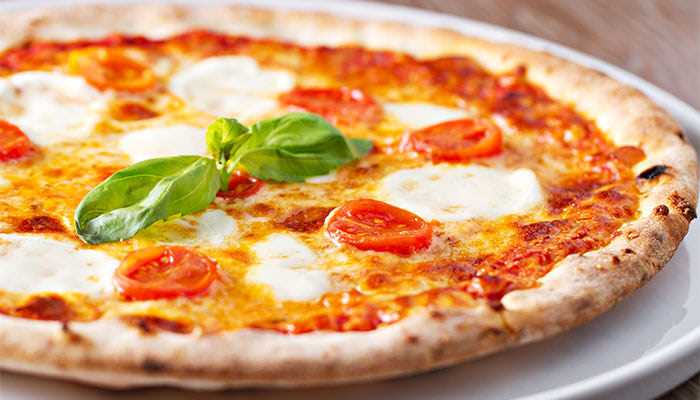 Crisp on the outside and tender on the inside — that’s crust nirvana for 40% of pizza lovers, yet crisp crust can be difficult to achieve consistently. The outer slices of a square-cut pie may deliver the perfect punch of crunch, but the center sogginess puts customers off — and their search for a new pizzeria is on.
Crisp on the outside and tender on the inside — that’s crust nirvana for 40% of pizza lovers, yet crisp crust can be difficult to achieve consistently. The outer slices of a square-cut pie may deliver the perfect punch of crunch, but the center sogginess puts customers off — and their search for a new pizzeria is on.
Achieving consistent, perfectly crispy pizza crust is rarely — if ever — the result of adjusting one single element. Instead, it requires a big-picture look at three major factors impacting crust quality and crispness: ovens, dough proofing practices, and the type of dough balls or crusts used.
Factor 1: Your Oven
Perfect crispness is a mainstay for high-heat ovens, with frontrunners being the radiant heat of deck ovens or the high temps and fast baking speed of brick ovens. But, not all operations are equipped with high-heat ovens. What then? Some operators turn to bakeable trays or metal pans as solutions, only to find that their inconsistent heat retention compounds crust sogginess challenges. Pizza stones, on the other hand, evenly retain and distribute heat for delicious high-heat oven crust crispness produced in any type of pizza oven.
Factor 2: Your Dough Proofing Practices
How — and how well — you proof dough balls determines crispness well before you slide a pizza crust into the oven. Inattention to the tools, temperature, and time used during the dough proofing process, or overlooking the color or size of a proofed dough ball, can have rather unappetizing consequences. Underproof and your crust won’t brown or get crispy; overproof and your crust remains flat because there is no live yeast to provide lift.
Dough proofing is both a science and an art, so it may take a little time to perfect the process. That’s where your dough manufacturer partner comes in — helping you with any challenges and providing the correct types of dough balls and crusts for crispy, crowd-pleasing pies you’re proud to serve.
Factor 3: Your Dough Manufacturer’s Products
Alive & Kickin’ has an extensive lineup of dough balls and crusts that offer a satisfying crunch whatever your specialty:
- New York Style Dough Balls have a crispy outside, slightly chewy inside texture, and superior hand-tossing or sheeting capabilities that take New York style and crispy thin crusts to the next level
- Sheeter Dough Balls (STR) are specifically used for thin sheeted pizzas. This dough excels in a deck oven, but can be used in conveyors as well — resulting in a flaky crisp texture and nicely colored bottom.
- Par-Baked Ultra Thin Pizza Crusts are cracker-thin and available in a wide array of sizes for lighter, less filling alternatives in appetizers and pizzas
- Extra Crispy Thin Crusts range in size from 7” to 16” and feature a distinctly crunchy short bite and rich flavor
Meet your pizza crust crispness goals and learn which crusts are best for your oven in the guide below.





